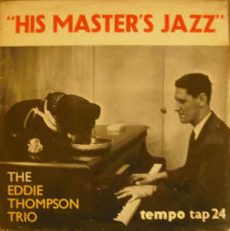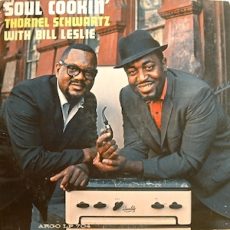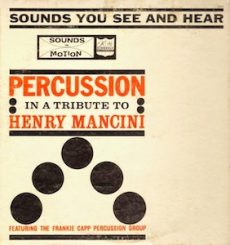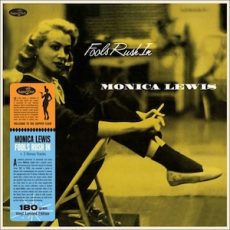
Daily Dose Of Jazz
Edgar Charles Thompson, known professionally as Eddie Thompson, was born blind on May 31, 1925 in London, England. After studying at the same school for the blind as George Shearing, he recorded with Victor Feldman in the late 1940s and also with the Carlo Krahmer Band at the Paris Jazz Fair in 1949.
By the 1950s he was working with Tony Crombie, making records with him under his own name, Vic Ash, Freddy Randall and Tommy Whittle. He was house pianist at Ronnie Scott’s from 1959 until 1960. Emigrating to Manhattan, New York, from 1962 to 1972, he lived and worked at the Hickory House, a well-known jazz club on 52nd Street. He led his own trio featuring Len Skeat and Martin Drew, which recorded an album with Spike Robinson.
Thompson also formed a duo with Roger Kellaway. Thompson was considered to have been a dazzlingly inventive player during his early recording career. He recorded in the early 1980s by Hep Records,including Memories of You released in 1983.
During the 70s, Eddie returned to his homeland and regularly travelled up to Stockport on Fridays, with his dog. During the day he would perform piano tuning at Nield and Hardy’s, and played the Warren Buckley pub’s jazz cellar where Eddie played during the evening with two local musicians making up the trio. One notable evening Al Grey and Buddy Tate played a memorable session with Eddie’s trio.
Pianist Eddie Thompson, a lifelong smoking habit which caused him to develop emphysema, died on November 6, 1986 in London at the age of 61.
More Posts: bandleader,history,instrumental,jazz,music,piano

Daily Dose Of Jazz…
Thornel Schwartz Jr. was born on May 29, 1927 in Philadelphia, Pennsylvania. He attended the Landis Institute for piano, but became known as a jazz guitarist starting in the 1950s. He was Freddie Cole’s guitarist early in the decade, then worked with Jimmy Smith and Johnny Hammond Smith later in the decade.
The 1960s saw Schwartz recording with Larry Young, Jimmy Forrest, Charles Earland, Byrdie Green, Sylvia Syms and extensively with Jimmy McGriff. In the 1970s he recorded with Groove Holmes.
Though he is known as Thornel on recordings and standard jazz reference works, having recorded one album as a leader and twenty-six as a sideman, his name is spelled Thornal on his social security application, as is his father.
Electric guitarist Thornel Schwartz Jr., who played on the recordings of many Philadelphia jazz musicians, especially electronic organ players, died on December 30, 1977 in his hometown.
More Posts: guitar,history,instrumental,jazz,music

Daily Dose Of Jazz…
Jimmy Henderson was born on May 20, 1921 in Wichita Falls, Texas and began studying piano at age six, picking up the trombone a few years later. By the time he was thirteen he had joined a musicians’ union and was first chair at the Wichita Falls Symphony Orchestra.
Winning several trombone competitions by age fourteen, Jimmy started his own orchestra while still in his teens, in addition to studying at the Cincinnati Conservatory of Music. Henderson toured with the big bands of Hal McIntyre, Jimmy Dorsey, and Tommy Dorsey.
In 1954, he moved to Los Angeles, California where he steadily worked as a session musician for some 20 years. Among his credits in the studios was the soundtrack for Bonanza. From 1957 to 1960, he was also a member of Lawrence Welk’s orchestra in which he appeared weekly on the Maestro’s television show.
He led his own orchestra for fifteen years, and was the musical director for the Emmy Awards, Television Academy Honors, and Directors Guild of America Awards In the 1970s, he led the Glenn Miller Orchestra ghost band before retiring in 1980.
Trombonist and bandleader Jimmy Henderson died at the age of 77 on June 10, 1998 in New York City, New York.
More Posts: bandleader,history,instrumental,jazz,music,trombone

Daily Dose Of Jazz…
Denys Justin Wright, known professionally as Denny Wright, was born on May 6, 1924 in Deptford, London, England. He grew up in Brockley with frequent forays to the Old Kent Road and the Elephant and Castle. His first instrument was the piano. His older brother was a semi-professional guitarist and soon he was trying to play his brother’s guitar. He began playing professionally before the Second World War, while at school.
A session musician for many years, he frequently acted as arranger and fixer for recording sessions. As a prolific jazz and orchestra composer Wright led many bands, from small ensembles and night club bands to orchestras. He worked with Latin American and Jamaican bands, Afro-Cubists and the Decca Records house band.
In the Forties Wright played in jazz clubs in the West End of London, doing session work, performed in bands on radio shows, and medically unfit to serve due to a childhood injury, he entertained the troops. In 1945 he started the first bebop club in London.
He went on to form several bands, tour the Soviet Union, and continued his work as a session musician, producing Tribute To The Hot Club as The Cooper-Wright Quintet. Denny gave private lessons and at London comprehensive schools, and he lectured at the Royal College of Music on the life of a session musician.
During his career he worked with Stéphane Grappelli, Lonnie Donegan, Johnny Duncan, Digby Fairweather, Ella Fitzgerald, Ken Snakehips Johnson, Billy Eckstine, Fapy Lafertin, Russ Conway, Biréli Lagrène, Humphrey Lyttelton, Marie Bryant, Nigel Kennedy, and George Shearing.
Guitarist and pianist Denny Wright, who was voted the 1980 BBC Jazz Society Musician of the Year, died on February 8, 1992.
More Posts: bandleader,guita,history,instrumental,jazz,music,piano

Daily Dose Of Jazz…
Monica Lewis was born May Lewis in Chicago, Illinois on May 5, 1922, the youngest of three children. Her father was a pianist, composer and musical director for CBS, while her mother was a singer with the Chicago Opera Company. She studied voice with her mother and when she was eleven the family moved to New York City due to The Great Depression.
She began singing on radio after a successful audition with WMCA in New York City, which led to her own program. At age seventeen she started working as a singer for a radio show titled Gloom Dodgers in order to support her family while studying at Hunter College. Shortly afterwards Lewis had a radio show titled Monica Makes Music and went on to co-star on The Chesterfield Supper Club radio show.
Winning a part as a singing cigarette girl in the Broadway show Johnny 2X4, her work on Broadway led to performing at the Stork Club. She dropped out of school, changed her name from May to Monica because she thought it was sexier. In 1943 at an audition in Times Square with hundreds of women participating, she earned the part as a singer.
She started singing on Hotel Astor’s roof with Goodman’s orchestra and established her career through nationally broadcast shows. Lewis went on to record for Signature Records, MGM Records, Decca Records, Capitol Records, and Verve Records.
She went on to sing in commercials, became the voice of Miss Chiquita Banana, and appeared on the Toast of the Town which would become the Ed Sullivan Show. It was created and produced by her brother Marlo Lewis.
By 1950 she was signed to a contract with MGM and movies were added to her trades. Over the next three decades she appeared in romantic comedies and disaster films along with television action, crime and western series. Resuming her singing career in the 1980’s and 1990s, she performed at popular clubs in Los Angeles and New York City.
Vocalist Monica Lewis died ten days after an interview with The New Yorker, on June 12, 2015. The article was posthumously published in the September 7, 2015 edition.
More Posts: bandleader,history,instrumental,jazz,music,vocal


